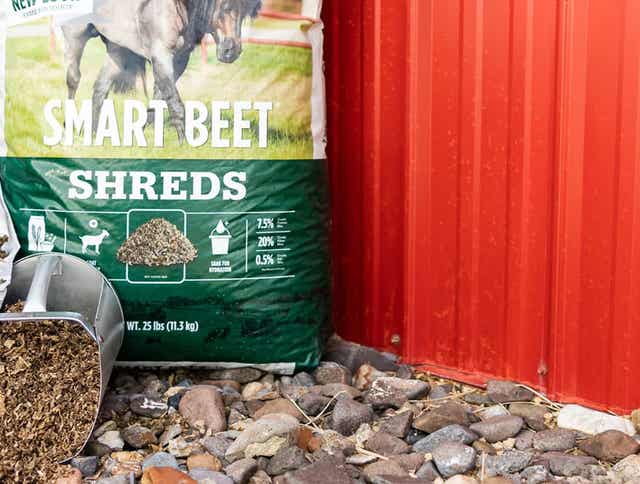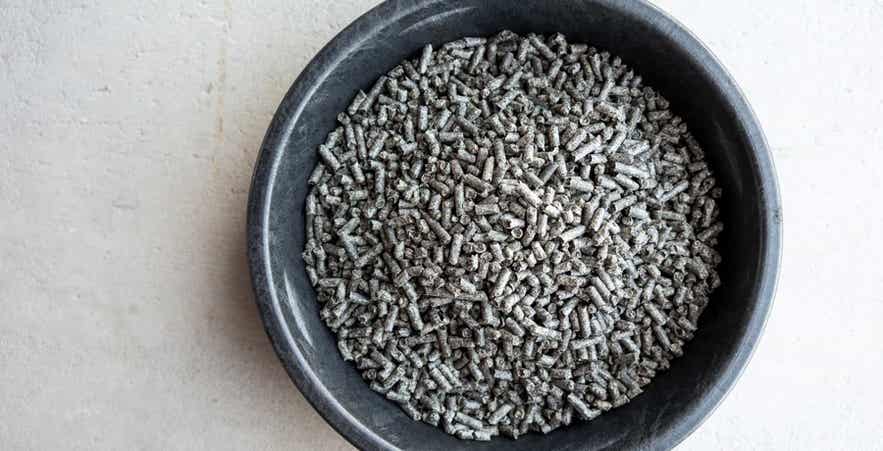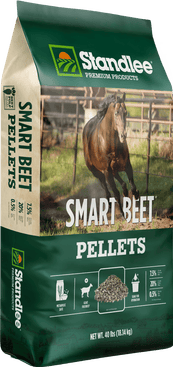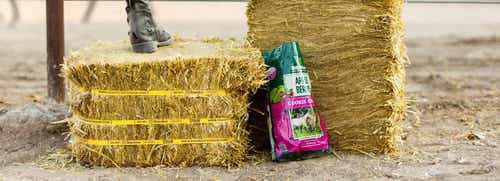
Beet Pulp for Horses
What is beet pulp? Beet pulp is a popular ingredient fed to horses. It is often included in prepared horse feeds targeting senior horses and performance horses. Beet pulp is also utilized as a single ingredient added to the diet at the time of feeding by horse owners. Since beet pulp has become a mainstay in equine nutrition, it is important to understand more about just what it is.
The Sugar Beet to Beet Pulp Process
Beet pulp is a by-product of the sugar industry. Don’t panic, beet pulp is the fibrous residue left after most of the sugar is removed from the sugar beet. The process involves cutting the whole sugar beet into thin slices to increase surface area. The slices are then soaked in hot water in a diffuser. Since sugar is water soluble, the sugar mixes with water forming a sugar-rich liquid. The slices are then pressed to extract as much sugar water as possible. The remaining pulp residue becomes what we call beet pulp.
Drying the Pulp
Since beet pulp is wet or damp following sugar extraction, it must be dried to prevent mold growth and bacterial fermentation. The drying process lowers the moisture content to less than 15%. There are several methods utilized to dry beet pulp. Most often the beet pulp is fed into a large drum drier. Heat for the drier is fueled by electricity, natural gas or coal. In some areas of the country, the beet pulp is “solar” dried out in large-paved areas.
Physical Form of Beet Pulp

Dried beet pulp comes in two forms: beet pulp shreds and beet pulp pellets. The shreds are simply the beet pulp slices that have been dried. They have an appearance similar to tiny pieces of rope. The shreds have a low bulk density, so they are difficult to handle in bulk. To make beet pulp easier to handle, many sugar companies will grind and pellet the shreds. This gives a product that is much easier to ship and handle. Good news for horse owners, either physical form can be fed to horses.
What Color is Beet Pulp?
Beet pulp normally varies in color from chalky grey to almost black depending on the method utilized to dry the beet pulp. Solar dried beet pulp will be the chalky grey color due to bleaching in the sun. The beet pulp dried with electricity, natural gas and coal will progressively be darker in color. Some processing facilities within the same company use different drying methods resulting in color variance.
The good news is that none of the drying methods add to, or subtract from, the nutrient value of beet pulp. Color does not change digestibility, palatability or feeding quality of beet pulp. The guaranteed analysis printed on the product packaging does not change based on the color or drying method utilized to stabilize beet pulp.
The other potential determinant of beet pulp color is the addition of a desugared molasses (concentrated separator by-product – this comes directly from the process of separating sugar from the sugar beet – a small percentage of this is made up of sucrose with the rest being other soluble amino acids from the beet) to reduce dust and aid in the handling of beet pulp. The addition of desugared molasses will make the beet pulp darker in color.
But again, the nutrient content of beet pulp is guaranteed on the packaging so drying method and any natural additions are accounted for, giving the beet pulp buyer peace of mind in what they are purchasing for their horses.
What is the Nutritional Value of Beet Pulp?
Beet pulp is a highly digestible fiber source with fewer non-digestible fibers (like lignin) than hay, making it calorie dense. Often called a “super-fiber,” beet pulp can:
- Safely support weight gain or performance
- Replace some grain in the diet (helping reduce colic and digestive risk)
- Deliver the same calorie content as an equal dry weight of oats
- Provide slow-release energy through fermentation in the horse’s hindgut
- Act as a prebiotic that promotes a healthy digestive microbiome
It is commonly used in diets for performance horses, senior horses, and underweight horses.
How to Feed Beet Pulp to Horses
Providing beet pulp to your horse when the beet pulp is already mixed into a prepared or manufactured feed is easy, just read and follow the manufacturers’ label directions. If you want to add beet pulp as a single ingredient to your horse’s diet:
- Introduce small amounts gradually over 7–14 days
- Soak the beet pulp before feeding (like all ingredients in the horse’s diet, beet pulp can cause choke if a horse doesn’t chew its feed properly)
- Use 2 parts water to 1 part beet pulp (dry), completely submerged
- Soak for at least 15 minutes, or until it reaches a soup-like consistency
- Like all ingredients in the horse’s diet, beet pulp can cause choke if a horse doesn’t chew its feed properly
For most horses a target dry weight of beet pulp that can be fed daily is from 0.05 – 0.2% of body weight per day. This equates to 0.5 – 2 lbs/day for a 1,000 pound horse.
Conclusion
Beet pulp is a valuable and dependable feed ingredient that continues to earn its place in the diets of senior horses, performance horses, and those needing additional calories. Its high digestibility, fermentable fiber content, and consistent nutritional value make it a safe and effective option for supporting digestive health and energy needs. Understanding how beet pulp is produced, processed, and fed allows horse owners to make informed choices that benefit their horse’s overall health and performance.
If you have questions, please contact the nutritionists at Standlee, or consult with your veterinarian.
By Dr. Stephen Duren
Standlee Nutritional Expert - Performance Horse Nutrition
Additional Learning Resources
Standlee Nutritional Papers
- What to Know About Feeding Beet Pulp Products to Horses
- Research Shows Soaking Beet Pulp Reduces Sugar Content










